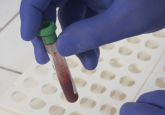Sensor could diagnose cyanide poisoning in 70 seconds

Chemists from the South Dakota State University (SD, USA) chemistry and biochemistry department have developed a sensor that can detect exposure to cyanide within 70 seconds. The team, led by Brian Logue, Associate Professor at South Dakota State University, has been analyzing cyanide and its metabolites to help create countermeasures for cyanide poisoning.
A victim of cyanide poisoning can die within 30 minutes, yet the current diagnostic test to determine cyanide exposure takes 24 hours. The US Department of Health and Human Services (Washington DC, USA) recommendations state that, ‘any delay to draw blood or collect urine could endanger patient welfare’. Medical personnel therefore currently treat the patient immediately in suspected cases of cyanide poisoning.
Logue’s team have received nearly US$2 million over the last ten years to develop a solution, through grants from the US Department of Defense (Washington DC, USA) and the National Institutes of Health (MD, USA). More than 1.5 million tons of hydrogen cyanide is produced globally, according to the United Nations Environment Program (Kenya), mostly by industrial manufacturing.
When industrial fires occur, workers and firefighters can be exposed to cyanide. Moreover, many common building materials such as plastics and carpet contain cyanide that can be released when they burn. “Common materials such as nylon and polyurethane release cyanide when they burn,” Logue explained. Some food items, for example lima beans, also contain high levels of cyanide.
Early symptoms of cyanide poisoning include dizziness, headache, shortness of breath, rapid heart rate, nausea, and vomiting. As Logue described, “A lot of these symptoms are pretty nondescript. That’s another part of the reason for the sensor.”
The patent-pending sensor design employs a two-stage process. The first converts the cyanide present in the sample into a gas and the second traps it in a base. The cyanide then reacts with a second substance and becomes fluorescent when exposed to a light source. The final fluorescent product then emits its own light which can be measured to determine the concentration of cyanide.
Tests performed on blood samples from rabbits exposed to cyanide were 100% accurate at detecting cyanide exposure, even at levels 200 times lower than a lethal concentration.
In catastrophic situations such as industrial fires where many individuals might need to be assessed for cyanide poisoning, speed is essential. A blood sample from a finger prick could be used to rapidly determine exposure.
The team plans to conduct larger animal studies to statistically determine the sensor’s accuracy. Logue concluded, “I want to get this product to the people to save lives.”
Source: Chemists develop device that detects cyanide poisoning in 70 seconds.





